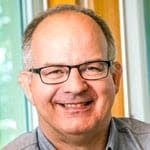

The whole variety of SAP
Just as in the year one after the founding of SAP, the customer should be the focus in the year one after the anniversary. Sounds simple, but it's not. A look at history shows this, as does a look at the present.
Just in time for the celebration, a coffee-table book has also been published, which aims to depict "the entire diversity of SAP" with previously unpublished photographs, as the publisher announces. On Amazon, the book was only discovered after some searching - and to date, not a single customer review has been found. That also says something.
However, the Group, Executive Board and Supervisory Board did not have to worry about well-wishers in 2022. Chancellor Scholz took the opportunity to attend the ceremony in person at the SAP Arena in Mannheim and pay tribute to the company's success story. The Chancellor said that the founding of SAP in 1972 had been in keeping with the spirit of the times.
Enthusiasm for technology, a spirit of optimism and a political thaw during the Cold War shaped the world when the five SAP founders sparked their own revolution with an idea. With standard software that maps all business processes in the company and makes data available in real time, they turned the former start-up into a global corporation.
Out of proximity to the customer
Why is SAP actually located in Walldorf? Because the five founders focused primarily on customer proximity. In the early days, Dietmar Hopp, Hasso Plattner, Claus Wellenreuther, Klaus Tschira and Hans-Werner Hector were to be found primarily in their customers' data centers to ensure that the software not only made them happy, but really happy, and provided exactly the data that was needed, at the moment it was needed.
SAP DNA and Vision
The major customer that started it all, Imperial Chemical Industries (ICI) with its German subsidiary in Kraichgau, has long since been shattered. SAP's vision remains alive. "Customer proximity, knowledge of the individual industries plus the right balance between individual requirements and standardized applications: To this day, that is the basis of SAP's success," the Chancellor praised the Group in his anniversary speech.
Solution orientation and customer focus are also the focus for CEO Christian Klein. These values have made SAP what it is today, he said. "We must never lose this part of our DNA," he emphasized at the ceremony in Mannheim. He himself learned the courage to change from the founders, as well as the ability to reinvent oneself again and again and to question the status quo.
Turning point: Cloud Computing
The question of whether SAP is really able to change without having to question its own DNA will perhaps be on the agenda sooner than Christian Klein would like. He must step on the gas in the move to the cloud and make SAP's change in strategy irreversible. This is what supervisory boards, analysts and shareholders are demanding. The pressure is mounting. Year one after the anniversary will probably be more decisive for Klein and for SAP than the anniversary year itself - even though this year was already marked by plenty of turning points and "tectonic shifts in fast motion," as the Chancellor noted.
What is the most important thing? Bringing customers along and finding new solutions with them. To do this, the people involved need courage, empathy, and a good dash of purposelessness. This spirit also characterized the five SAP founders fifty years ago, when they commuted from data center to data center and had no idea that their company would grow to more than a hundred thousand employees fifty years later.
Carve-out
The Big Cleanup 2023: Litmos, IS-H and Business ByDesign are going into storage. The new year begins with a big cleanup. Christian Klein is tidying up and cleaning up the portfolio. SAP wants to bundle investments and only put money into projects that promise growth. At the same time, hundreds of products are due for expensive security and function updates. It's probably time for the hard cut. So SAP is parting with the Litmos learning platform. The service for Business ByDesign, the rental software in the cloud, is also to be scaled back. SAP is also withdrawing from the healthcare sector, announcing that it will discontinue support for the hospital management software IS-H (Industry Solutions Healthcare). SAP itself will no longer offer a successor solution on S/4. SAP is thus saying goodbye to the healthcare sector. The Executive Board would like to see more predictability.
Conversion
SAP says it has recognized that its customers want to move to the cloud quickly. The group has accelerated the modernization of its cloud operations to achieve a harmonized infrastructure for cloud solution delivery ahead of schedule. Christian Klein and his fellow board members have set a goal of increasing cloud revenue growth to more than 22 billion euros by 2025. Above all, the "share of revenues that can be planned more easily" is to be expanded to around 85 percent. Many customers pay for this plus in plannability with more effort, chaos and unplannability.
For example, hospitals that previously worked with SAP - and that includes many in Germany, Austria and Switzerland. They now have to redesign their hospital information systems themselves. Just like many mid-sized companies that relied on the rental solution SAP Business ByDesign and now have to make do only with security patches and legal updates instead of one function update per quarter.
Optimism and impartiality
When SAP was founded in 1972, Christian Klein was not yet born. He was born eight years later. Thirty years ago, when he was still cramming vocabulary, grammar, and binomial formulas at the age of thirteen, I was allowed to enter the SAP world. In 2006, I ventured into self-employment, and in 2016 I founded Adventas. Since 2012, I have been allowed to contribute as an SAP mentor and, in particular, drive the development of SAP ECC and S/4 Hana. I am happy and proud that I have been able to accompany SAP for a good part of its fifty-year success story.
Now, as we enter the next stage in 2023, it might do us good to pause and take another look at exactly what has made us successful in the past. I think for me, as for SAP, the root of success lies in being close to the customer and the firm promise to look for solutions that are not yet to be found in any drawer. You need this founding spirit, this optimism and this impartiality when you start, found, get going. Customers appreciate this and are happy to pay you back: with openness, patience and, last but not least, with loyalty, which is urgently needed when things get serious and go wrong.
How much time does SAP give customers?
SAP is a global corporation with an extensive portfolio, and a lot would go wrong if everything went smoothly and without a hitch. That's why customer proximity, both literally and figuratively, is so important. All the more so in a change and consolidation program such as the one SAP has imposed on itself. Analysts and shareholders can well understand that Christian Klein wants and needs to move all business processes to the cloud quickly, consistently and powerfully.
Many customers, however, cannot move as quickly as they would like. They are desperately looking for solutions that pave the way to the cloud and at the same time preserve the familiar on-premises solutions, at least for a transitional period. SAP is increasingly focusing on hybrid landscapes. The move to S/4 should give everyone the opportunity to standardize their business processes. Customers have now understood that the cloud is the future. The question remains: How much time is left for the transition? Who benefits from the focus on "predictable revenues"?
Plannable sales
The rhetoric of "predictable revenue" and frantic portfolio adjustments send dangerous signals to customers. Many questions remain unanswered: Which products, solutions and services will SAP continue to rely on in the future? Which once euphorically celebrated solutions will be abandoned? How much time is left? What counts more: speed or customer benefits?
Start-ups and small companies find it easier than large corporations to dispense with plannability and detailed strategy scenarios. Their future is mainly decided by the customer with his plans, needs and priorities. To achieve this, they move close to the data center and throw their own plans out the window. It is precisely this absolute commitment to customer benefit that SAP is threatening to lose.
What good is it to a race driver if the destination is clear and in sight, but on the way there the doors shake, the engine overheats and the air conditioning fails? And, perhaps more importantly, what happens when the driver doesn't know how long the track is, what's waiting for him around the next bend, and whether there are any spare parts at all when the next breakdown occurs?
Customer first and only
"Cloud first" is correct, but "customer first" is more correct. Christian Klein has often made it clear that his motto is "cloud first" and not "cloud only". SAP continues to offer on-premises solutions. Rhetoric, marketing and portfolio policy, however, speak more in the language of "cloud only" - at least that's how it comes across to many customers, especially in the midmarket. If SAP wants to make rapid progress in the new phase of the company's history - in the age of the cloud - it should commit itself to two equally important principles in addition to the cloud credo: "Customer first" and "Customer only". Fifty years of history have clearly shown one thing: SAP's success is always first and foremost the success of its users. All the best for the next fifty years, SAP!






